
Grenadiers or rattails are generally large, brown to black gadiform marine fish of the subfamily Macrourinae, the largest subfamily of the family Macrouridae. Found at great depths from the Arctic to Antarctic, members of this subfamily are amongst the most abundant of the deep-sea fish.

Ilyophis is a genus of eels in the cutthroat eel family Synaphobranchidae.

Coelorinchus is a genus of rattails.

Coryphaenoides is a genus of rattails which is found in all oceans of the world. They are found in deep waters and C. yaquinae, recorded to 7,012 m (23,005 ft), is the only member in the family known from the hadal zone.
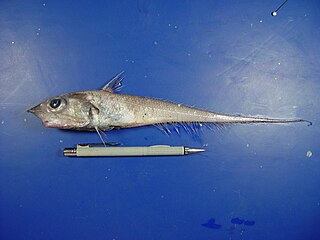
Nezumia is a genus of rattails.

Hymenocephalus is a genus of rattails.
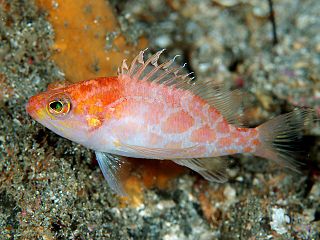
Plectranthias is a genus of ray-finned fish in the subfamily Anthiinae, part of the family Serranidae, the groupers and sea basses. They are found in the Atlantic, Indian and Pacific Ocean.
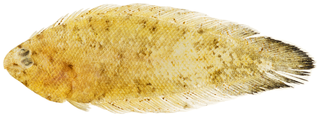
Symphurus is a genus of fish in the family Cynoglossidae found in the Atlantic, Indian and Pacific Ocean. Most species mainly occur in relatively shallow water, including estuaries. Some species are also found in deeper water, including S. thermophilus that lives at hydrothermal vents. These species are distinguished by merged dorsal, caudal and anal fins, the absence of a lateral line and pectoral fins, and the presence of only one pelvic fin. They are sinistral flatfishes, meaning that as adults, their crania are asymmetrical, with both eyes on the left side. The largest species grows to about 32 cm (1 ft) long.

Gadella is a genus of morid cod. The species in this genus are characterised by the absence of a chin barbell, an anterior dorsal fin with 7-11 rays, a long based anal fin which has a straight profile, the outermost rays of the pelvic fin are filamentous and extend a small distance beyond the membrane. They do not have a photophore. The Gadella codlings are found around the tropical and subtropical seas around the world on the outer continental shelf to the mid continental slope. They are of no interest to fisheries.
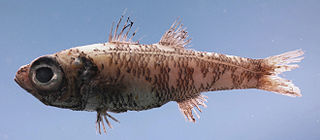
Epigonus is a genus of fish in the family Epigonidae found in the Atlantic, Indian and Pacific Ocean. The genus was erected by Constantine Samuel Rafinesque in 1810.

Munida is the largest genus of squat lobsters in the family Munididae, with over 240 species.

Hyporhamphus is a genus of halfbeaks. The species in this genus are distributed throughout the warmer seas of the world, most species being Indo-Pacific and there are some freshwater species.

Chascanopsetta is a genus of flatfish in the family Bothidae found in deeper parts of the Pacific and Indian Oceans with a single species, C. lugubris also occurring in the Atlantic Ocean. It contains nine member species.

Paraliparis is a genus of fish in the family Liparidae, the snailfishes. It is found in benthic, benthopelagic and pelagic habitats in all the world's oceans.

Alepocephalus is a genus of slickheads found in all oceans.

Chlorophthalmus is a genus of greeneyes
Pseudonezumia is a genus of rattails.
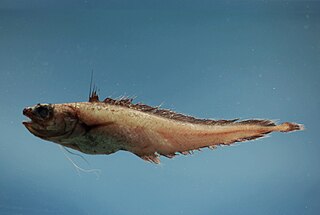
Laemonema is a genus of morid cods.

The scaldfishes comprise a genus, Arnoglossus, of lefteye flounders. They are found in the Pacific, Indian and Atlantic Oceans, including the Mediterranean and Black Sea. They are entirely absent from most of the Americas; the only exceptions are A. coeruleosticta and A. multirastris found off Chile. The genus include both species found in shallow and deeper water. The largest species reaches 28 cm (11 in).



















